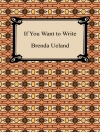This highly practical handbook teaches you how to unlock the value of your existing metadata through cleaning, reconciliation, enrichment and linking and how to streamline the process of new metadata creation. Libraries, archives and museums are facing up to the challenge of providing access to fast growing collections whilst managing cuts to budgets. Key to this is the creation, linking and publishing of good quality metadata as Linked Data that will allow their collections to be discovered, accessed and disseminated in a sustainable manner. This highly practical handbook teaches you how to unlock the value of your existing metadata through cleaning, reconciliation, enrichment and linking and how to streamline the process of new metadata creation. Metadata experts Seth van Hooland and Ruben Verborgh introduce the key concepts of metadata standards and Linked Data and how they can be practically applied to existing metadata, giving readers the tools and understanding to achieve maximum results with limited resources. Readers will learn how to critically assess and use (semi-)automated methods of managing metadata through hands-on exercises within the book and on the accompanying website. Each chapter is built around a case study from institutions around the world, demonstrating how freely available tools are being successfully used in different metadata contexts. This handbook delivers the necessary conceptual and practical understanding to empower practitioners to make the right decisions when making their organisations resources accessible on the Web. Key topics include, the value of metadata; metadata creation – architecture, data models and standards; metadata cleaning; metadata reconciliation; metadata enrichment through Linked Data and named-entity recognition; importing and exporting metadata; ensuring a sustainable publishing model. This will be an invaluable guide for metadata practitioners and researchers within all cultural heritage contexts, from library cataloguers and archivists to museum curatorial staff. It will also be of interest to students and academics within information science and digital humanities fields. IT managers with responsibility for information systems, as well as strategy heads and budget holders, at cultural heritage organisations, will find this a valuable decision-making aid.
Spis treści
Foreword – Sebastian Chan 1. Introduction 2. Modelling 3. Cleaning 4. Reconciling 5. Enriching 6. Publishing 7. Conclusions.
O autorze
Seth van Hooland is associate professor at the Information and Communication Science department of the Universite libre de Bruxelles, where he holds the chair in Digital Information. Van Hooland is also active as a consultant for clients such as the European Commission and occasionally works for leading companies in the Semantic Web industry such as Mondeca and Poolparty. Ruben Verborgh is a Ph Dresearcher in semantic hypermedia at Multimedia Lab – Ghent University – i Minds, Belgium. As a Master in Computer Science Engineering, he closely follows and participates in the latest evolutions on the Web. He is particularly fascinated by the Semantic Web, Linked Data, Web APIs and autonomous Web agents, and has authored more than 40 papers on these topics.












